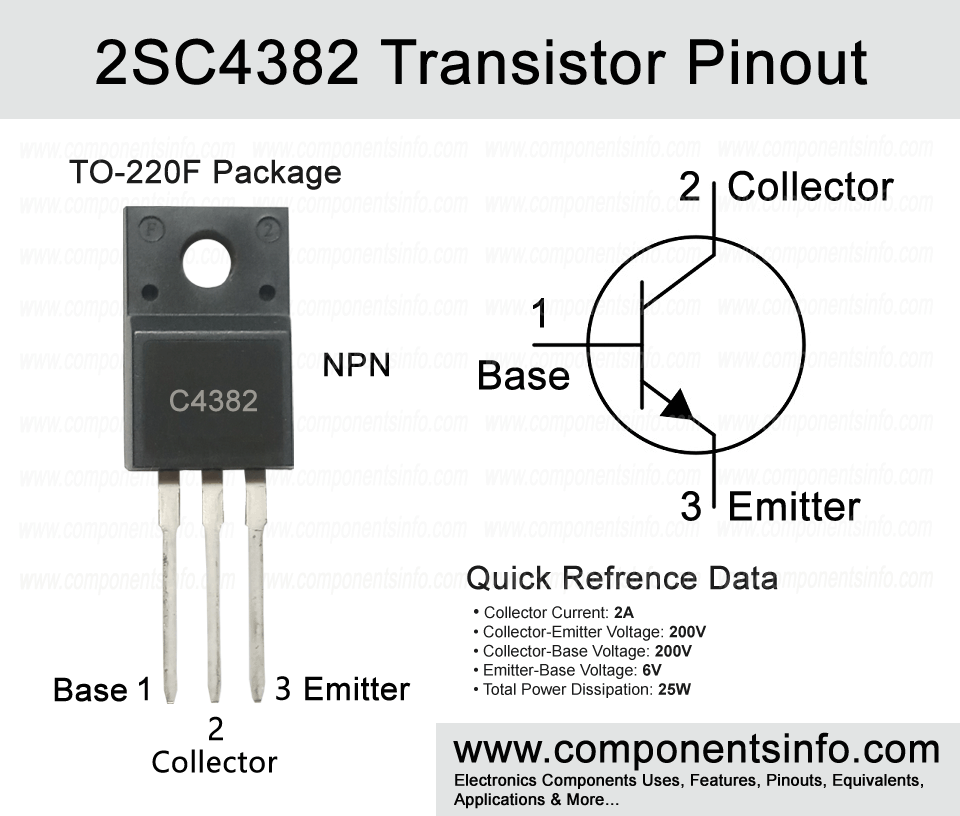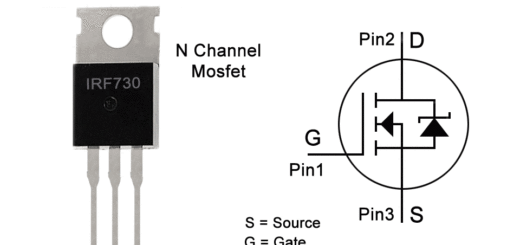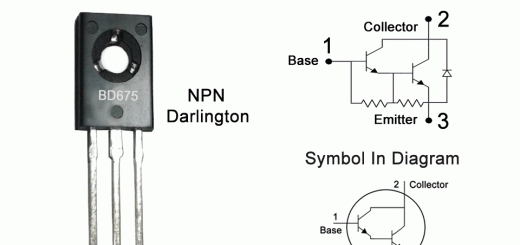2SC4382 Transistor Pinout, Equivalents, Features, Applications and Other Useful Info
2SC4328 is a high voltage NPN transistor comes in TO-220 Package. It can be used in many applications. This post explains 2SC4328 transistor pinout, equivalents, features, applications and other useful info about this device.
Absolute Maximum Ratings:
- Package Type: TO-220F
- Transistor Type: NPN
- Max Collector Current(IC): 2A
- Max Collector-Emitter Voltage (VCE): 200V
- Max Collector-Base Voltage (VCB): 200V
- Max Emitter-Base Voltage (VEBO): 6V
- Collector Power Dissipation (Pc): 25W
- DC Current Gain (hFE): 60
- Max Storage & Operating temperature Should Be: -55 to +150 Centigrade
Replacement & Equivalent
TIP161, TIP152, TIP150, MJE5741, MJE15034, 2SD990, 2SD835, 2SD799, 2SD2271, 2SD1976, 2SD1113, 2SD1409, 2SD1085.
2SC4382 Transistor Explained / Description:
The 2SC4382 is a TO-220F package NPN power transistor with many good features such as high collector-emitter voltage, up to 15MHz transition frequency, and the availability of its PNP complimentary transistor, etc. Looking at the pin layout of the transistor when looking from the part number side the first pin on the left is base, second or middle pin is the collector and the third pin at the right is the emitter.
The maximum ratings of the transistor are as follows:
Collector-emitter voltage is 200V, collector current is 2A, collector-base voltage is also 200V, emitter-base voltage is 6V, base current is 1A, collector power dissipation is 25W, junction temperature is 150°C and storage temperature is -55°C to 150°C.
The transistor is designed to be used in TV vertical outputs, in the driver stage of an audio output and for many general purpose uses.
How to Use This Transistor:
It is a BJT (Bipolar Junction Transistor) and has three pins which are emitter, base and collector. For whatever purpose you use a BJT these pins will always perform same functions whether you use it as an amplifier or as a switch or for any other purpose. The signal is always be applied at the base pin, the emitter pin will always be connected the with negative rail of the circuit and the final output will be received at the collector pin in an amplifier circuit but if you are building a switch circuit, then the load will be derived through the collector pin. For building any type of circuit whether it an amplifier circuit or a switch or any other circuit you must require some knowledge and experience of electronic circuits.
Applications:
Audio amplifier stages
Audio amplifier circuits
Switching circuits
Power Supply Circuits
And in many general purpose circuits
Safe Operating Guidelines:
Safe operating guidelines for the transistor.
- For safe operating the transistor it is important to use the transistor at least 20% below from its absolute maximum ratings.
- Always check pin layout before placing in a circuit.
- Use a suitable heatsink with the transistor.
- Storage and operating temperatures is -55°C to 150°C.
Datasheet:
To download the datasheet just copy and paste the below link in your browser.
https://www.alldatasheet.com/datasheet-pdf/view/1092093/NJSEMI/2SC4382.html



